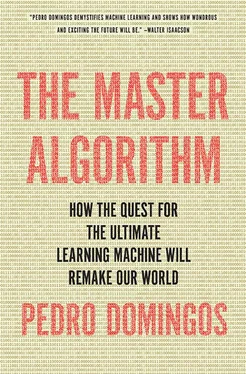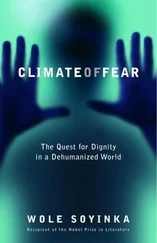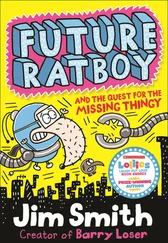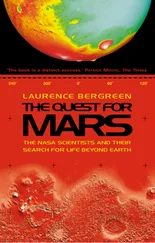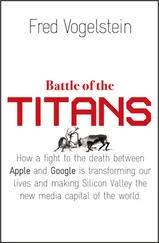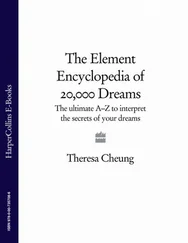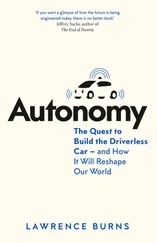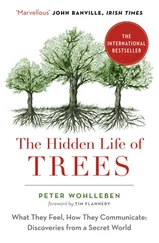Robot warfare is the theme of P. W. Singer’s Wired for War (Penguin, 2009). Cyber War , by Richard Clarke and Robert Knake (Ecco, 2012), sounds the alarm on cyberwar. My work on combining machine learning with game theory to defeat adversaries, which started as a class project, is described in “Adversarial classification,”* by Nilesh Dalvi et al. ( Proceedings of the Tenth International Conference on Knowledge Discovery and Data Mining , 2004). Predictive Policing , by Walter Perry et al. (Rand, 2013), is a guide to the use of analytics in police work.
The ferret brain rewiring experiments are described in “Visual behaviour mediated by retinal projections directed to the auditory pathway,” by Laurie von Melchner, Sarah Pallas, and Mriganka Sur ( Nature , 2000). Ben Underwood’s story is told in “Seeing with sound,” by Joanna Moorhead ( Guardian , 2007), and at www.benunderwood.com. Otto Creutzfeldt makes the case that the cortex is one algorithm in “Generality of the functional structure of the neocortex” ( Naturwissenschaften , 1977), as does Vernon Mountcastle in “An organizing principle for cerebral function: The unit model and the distributed system,” in The Mindful Brain , edited by Gerald Edelman and Vernon Mountcastle (MIT Press, 1978). Gary Marcus, Adam Marblestone, and Tom Dean make the case against in “The atoms of neural computation” ( Science , 2014).
“The unreasonable effectiveness of data,” by Alon Halevy, Peter Norvig, and Fernando Pereira ( IEEE Intelligent Systems , 2009), argues for machine learning as the new discovery paradigm. Benoît Mandelbrot explores the fractal geometry of nature in the eponymous book* (Freeman, 1982). James Gleick’s Chaos (Viking, 1987) discusses and depicts the Mandelbrot set. The Langlands program, a research effort that seeks to unify different subfields of mathematics, is described in Love and Math , by Edward Frenkel (Basic Books, 2014). The Golden Ticket , by Lance Fortnow (Princeton University Press, 2013), is an introduction to NP-completeness and the P = NP problem. The Annotated Turing ,* by Charles Petzold (Wiley, 2008), explains Turing machines by revisiting Turing’s original paper on them.
The Cyc project is described in “Cyc: Toward programs with common sense,”* by Douglas Lenat et al. ( Communications of the ACM , 1990). Peter Norvig discusses Noam Chomsky’s criticisms of statistical learning in “On Chomsky and the two cultures of statistical learning” (http://norvig.com/chomsky.html). Jerry Fodor’s The Modularity of Mind (MIT Press, 1983) summarizes his views on how the mind works. “What big data will never explain,” by Leon Wieseltier ( New Republic , 2013), and “Pundits, stop sounding ignorant about data,” by Andrew McAfee ( Harvard Business Review , 2013), give a flavor of the controversy surrounding what big data can and can’t do. Daniel Kahneman explains why algorithms often beat intuitions in Chapter 21 of Thinking, Fast and Slow (Farrar, Straus and Giroux, 2011). David Patterson makes the case for the role of computing and data in the fight against cancer in “Computer scientists may have what it takes to help cure cancer” ( New York Times , 2011).
More on the various tribes’ paths to the Master Algorithm in the corresponding sections below.
Hume’s classic formulation of the problem of induction appears in Volume I of A Treatise of Human Nature (1739). David Wolpert derives his “no free lunch” theorem for induction in “The lack of a priori distinctions between learning algorithms”* ( Neural Computation , 1996). I discuss the importance of prior knowledge in machine learning in “Toward knowledge-rich data mining”* ( Data Mining and Knowledge Discovery , 2007) and misinterpretations of Occam’s razor in “The role of Occam’s razor in knowledge discovery”* ( Data Mining and Knowledge Discovery , 1999). Overfitting is one of the main themes of The Signal and the Noise , by Nate Silver (Penguin Press, 2012), who calls it “the most important scientific problem you’ve never heard of.” “Why most published research findings are false,”* by John Ioannidis ( PLoS Medicine , 2005), discusses the problem of mistaking chance findings for true ones in science. Yoav Benjamini and Yosef Hochberg propose a way to combat it in “Controlling the false discovery rate: A practical and powerful approach to multiple testing”* ( Journal of the Royal Statistical Society, Series B , 1995). The bias-variance decomposition is presented in “Neural networks and the bias/variance dilemma,” by Stuart Geman, Elie Bienenstock, and René Doursat ( Neural Computation , 1992). “Machine learning as an experimental science,” by Pat Langley ( Machine Learning , 1988), discusses the role of experimentation in machine learning.
William Stanley Jevons first proposed viewing induction as the inverse of deduction in The Principles of Science (1874). The paper “Machine learning of first-order predicates by inverting resolution,”* by Steve Muggleton and Wray Buntine ( Proceedings of the Fifth International Conference on Machine Learning , 1988), initiated the use of inverse deduction in machine learning. The book Relational Data Mining ,* edited by Sašo Džeroski and Nada Lavrač (Springer, 2001), is an introduction to the field of inductive logic programming, where inverse deduction is studied. “The CN2 Induction Algorithm,”* by Peter Clark and Tim Niblett ( Machine Learning , 1989), summarizes some of the main Michalski-style rule induction algorithms. The rule-mining approach used by retailers is described in “Fast algorithms for mining association rules,”* by Rakesh Agrawal and Ramakrishnan Srikant ( Proceedings of the Twentieth International Conference on Very Large Databases , 1994). An example of rule induction for cancer prediction is described in “Carcinogenesis predictions using inductive logic programming,” by Ashwin Srinivasan, Ross King, Stephen Muggleton, and Michael Sternberg ( Intelligent Data Analysis in Medicine and Pharmacology , 1997).
The two leading decision tree learners are presented in C4.5: Programs for Machine Learning ,* by J. Ross Quinlan (Morgan Kaufmann, 1992), and Classification and Regression Trees ,* by Leo Breiman, Jerome Friedman, Richard Olshen, and Charles Stone (Chapman and Hall, 1984). “Real-time human pose recognition in parts from single depth images,”* by Jamie Shotton et al. ( Communications of the ACM , 2013), explains how Microsoft’s Kinect uses decision trees to track gamers’ motions. “Competing approaches to predicting Supreme Court decision making,” by Andrew Martin et al. ( Perspectives on Politics , 2004), describes how decision trees beat legal experts at predicting Supreme Court votes and shows the decision tree for Justice Sandra Day O’Connor.
Allen Newell and Herbert Simon formulated the hypothesis that all intelligence is symbol manipulation in “Computer science as empirical enquiry: Symbols and search” ( Communications of the ACM , 1976). David Marr proposed his three levels of information processing in Vision * (Freeman, 1982). Machine Learning: An Artificial Intelligence Approach ,* edited by Ryszard Michalski, Jaime Carbonell, and Tom Mitchell (Tioga, 1983), gives a snapshot of the early days of symbolist research in machine learning. “Connectionist AI, symbolic AI, and the brain,”* by Paul Smolensky ( Artificial Intelligence Review , 1987), gives a connectionist view of symbolist models.
Читать дальше
